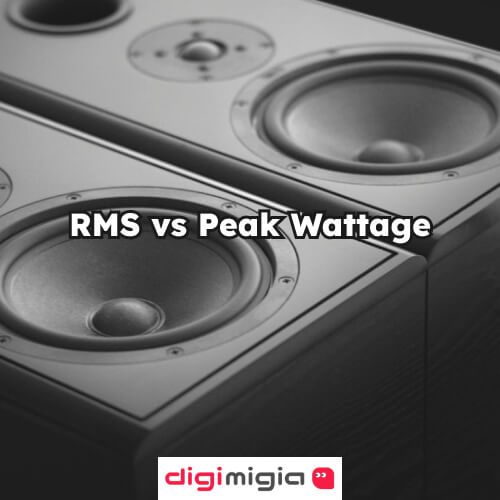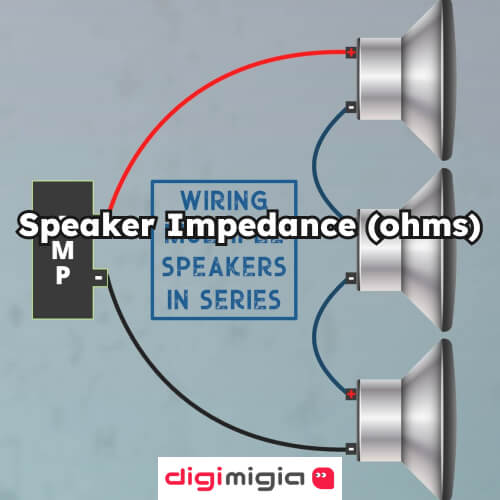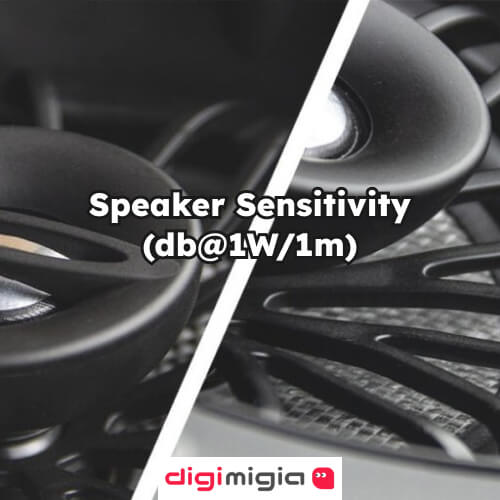How to Calculate Speaker Watts for Amplifier? amplifier speaker wattage calculator

Speaker wattage indicates the maximum power a speaker can manage before it fails or overheats. This implies that the wattage of an amplifier should be within the safe wattage range for a speaker. Typically, you can find the necessary details to identify a speaker’s wattage range on the speaker’s packaging, drum, or in the user manual. Additionally, you can conduct a load test on an amplifier with an unknown wattage to check its compatibility with a specific speaker. Continue reading this article on Digimigia in order to find out how to calculate speaker watts for amplifier?
Why Matching Speaker and Amplifier Power Matters?
The recommended amplifier power for speakers, which is measured in watts, must be carefully matched to the speaker’s power handling capacity. If the amplifier has too much power, it can damage the speakers by pushing them past their limits. On the other hand, insufficient power can result in poor sound quality and potential speaker damage from clipping distortion that happens when the amplifier is overdriven. By properly aligning the impedance of your speakers and amplifier, you make sure that your audio system works at its best, extending the lifespan of your equipment and delivering the highest sound quality.

Key Specs You Need to Know
In order to correctly calculate speakers’ watts for amplifiers, it’s important to know about speaker sensitivity, power handling (both RMS and peak), and impedance, along with the amplifier’s power output (RMS and peak). Typically, the amplifier’s power output should be at least equal to, and preferably a bit higher than, the speaker’s RMS power handling. This provides enough headroom for audio peaks, preventing distortion or harm to the speakers. Let us explain clearly in the following part.
RMS vs Peak Wattage
What is the Difference Between RMS and Peak Watts? Root mean square (RMS) and peak power ratings are fundamental terms related to power handling. If you want to create a high-performance entertainment system, it’s important to know what these terms mean. RMS (Root Mean Square) wattage shows the continuous power a device can manage without distortion, reflecting its dependable working capacity. Peak wattage, however, is the highest power a device can take for brief moments, such as audio peaks, without getting damaged. In simpler words, think of a car’s engine. RMS wattage is similar to the horsepower that the engine can consistently and dependably generate throughout the day. Peak wattage is like the temporary “boost” the engine can give when speeding up quickly, but it isn’t something the engine can maintain for an extended period.

Speaker Impedance (ohms)
Speaker impedance is a key element in audio engineering that greatly influences how audio systems perform and work together. Essentially, speaker impedance is the resistance a speaker offers to the electrical current from an amplifier. To put it simply, a speaker acts like an electric piston, requiring a specific amount of force to move, which can be measured. This measurement is its resistance to the incoming electrical current, referred to as impedance.

Speaker Sensitivity (db@1W/1m)
Speaker sensitivity, expressed in dB (1W/1m), shows how well a speaker turns electrical power into sound. It indicates the sound pressure level (SPL) a speaker generates at a distance of 1 meter when supplied with 1 watt of power. Greater sensitivity means the speaker will be louder with the same power input. For instance, a speaker with a sensitivity rating of 90 dB (1W/1m) will create 90 dB SPL at 1 meter when it receives 1 watt of power.

Step by Step Calculation Guide
To select the appropriate amplifier for your speakers, it’s important to align the amplifier’s power output with the speaker’s power handling capacity. Here is the step by step guide about how to calculate speaker watts for amplifier using:
- Check the instruction manual to find the RMS
- Check the maximum wattage mentioned in the manual to determine your wattage limit.
- Check the back of the speaker box if you don’t have a manual.
- Determine the voltage and amperage numbers if the wattage is not specified.
- For speaker watts calculator, multiply the amperage by the volts. For instance, if your speaker operates at 120V and 5A, you can find the wattage by multiplying these two numbers, resulting in 600 watts.
- Square the voltage and divide it by the impedance. For instance, if you own a 20-volt speaker with a 4 Ohm impedance, you would calculate 20 x 20 to get 400, and then divide that by 4. This results in a speaker rating of 100 watts.
- Pick an amplifier that matches or slightly surpasses the total power needed for your system, allowing for some extra capacity. For instance, if you require 120W and your amplifier provides 60W per channel, for amplifier wattage calculator, you will need a 2-channel amplifier.

Using an Amplifier Load Test to Test Compatibility
You can also do a test in order to check if an amplifier speaker wattage calculator with an unknown power rating will work with a specific speaker. Keep reading to find out how.
- Check the amplifier’s user manual to find out the wattage first. If you have the amplifier’s instruction manual, you don’t need to use a multimeter. Just look through the first 1 or 2 pages to find the amplifier’s specs and check the wattage. If you don’t have that info, you’ll have to do a load test by connecting the amplifier to a speaker and then testing the wattage using a sound test. Without the manufacturer’s recommended wattage range, there is no test you can use in speaker watts calculator.
- Turn off your multimeter and connect the probes to the front. Do not turn the multimeter on
- Put the multimeter’s probes into the speaker’s output ports.
- Set your multimeter to the 200 volts AC setting and turn it on. Flip the dial on the front of the multimeter to the 200 volts AC position.
- Put the clamp meter around the speaker wire that’s connected to the positive jack.
- Play a 50 Hz test tone from your phone or a CD and increase the volume.
- Check the screens on your meter to see the amplifier’s voltage and current.
- Multiply the voltage by the amperage to get speaker wattage.
- Check the amplifier’s wattage against your speaker watt calculator.
Conclusion
Speakers and amplifiers are two parts that should match perfectly, just like peanut butter and jelly. You’ve been searching online for the ideal speaker to enhance your listening experience, and now you just need the right amplifier to deliver those peanut butter vibes. As a result, we let you know how to calculate speaker watts for amplifier in this blog on Digimigia.

